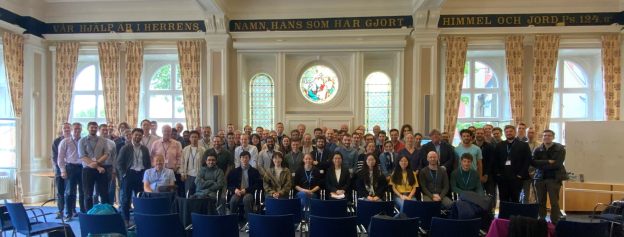Welcome to the web page of European Research Network System Identification (ERNSI)!
Modelling of dynamical systems is fundamental in almost all disciplines of science and engineering, ranging from life science to plant-wide process control. Engineering uses models for the design and analysis of complex technical systems. System identification concerns the construction, estimation and validation of mathematical models of dynamical physical or engineering phenomena from experimental data.
European Research Network System Identification (ERNSI) was launched in 1992 by the European Commission as a SCIENCE project. Since 2024 the network is coordinated by
Alessandro Chiuso
Department of Information Engineering
University of Padova
35131 Padova Italy
2025 ERNSI Workshop
The workshop will follow the traditional format starting with a joint reception on Sunday September 21 and ending after lunch on Wednesday September 24. Stephane Victor is the general chair of the organizing committee. Roland Tóth is the program chair. Marion Gilson and Guillaume Mercere are local co-chairs.
Location:
Presidency of University of Bordeaux:
Domaine du Haut-Carré – Salle Agora
43 Rue Pierre Noailles, 33400 Talence
https://www.identif.sagip.org/2025-ernsi-workshop-venue/
Objectives of ERNSI
The objectives of ERNSI are:
1. To carry out joint research on selected topics of system identification as specified below under research objectives
2. To advance modelling and identification procedures and theory to selected cases of the application areas.
3. To jointly train early-stage researchers and post-docs in modelling and identification. Special attention will be paid to new structures in higher education in Europe influenced by the Bologna process.
4. To increase trans-national cooperation between research teams. The cooperation between ERNSI research teams has turned out to be extremely valuable for research and for applications. We will now open up for new partners in order to overcome fragmentation.
5. To collaborate with industrial and commercial organisations, as well as governmental laboratories on system identification problems, to exchange experiences between the teams on these problems, and, when appropriate, for teams to jointly carry out applied research with such entities. Much of this will be done within existing national and EU projects.
6. To address important issues such as career development, experience of industrial projects, researcher mobility and gender balance.
